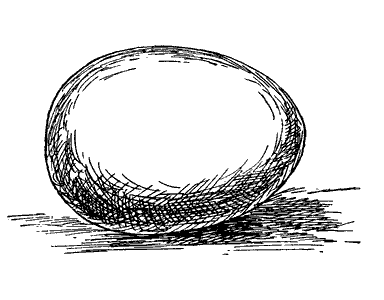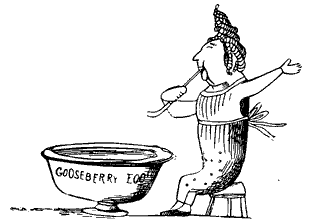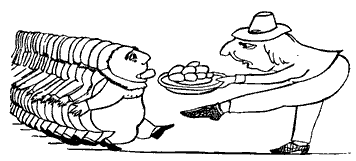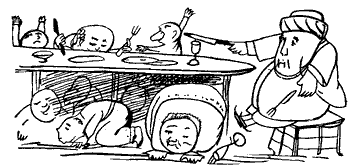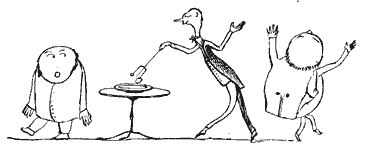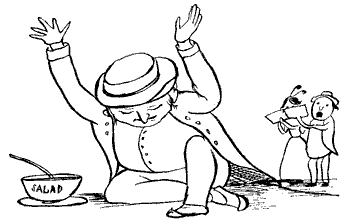Eggs are a great source of riboflavin, B12, and choline. They are rich in selenium, lutein, and zeaxanthin (which helps protect the eyes from macular degeneration.) Eggs abound with vitamins in the B family, along with vitamins A and D.
Essential fatty acids are a necessary part of the human diet. Most Americans could benefit from including more omega-3s in their diet. It is recommend to eat at least 2 grams of essential fatty acids per day. Omega-3s reduce the risk of heart disease, increase HDL cholesterol, help control high blood pressure and can even prevent the accumulation of a certain protein in the body linked to Alzheimer's Disease.
Although fish oils and flax seed are usually considered to be the best source of Omega-3 fatty acids, not everyone likes those foods or knows how to include them in their diet. People should probably still try to pursue sources of Omega-3 other than eggs, but eggs can help boost your intake.
To get the most nutritional value out of an egg, you need to start with the hen. Hens that are fed the standard commercial diet and kept in crowded cages simply cannot provide eggs worth much nutritionally. Hens that are fed improved diets augmented with flax seed, greens or insects are much more likely to pass those nutrients on to you.
If you've looked around any large grocery store lately, you've likely been dazzled by the variety of egg designations there are. They refer mostly to diet and to the conditions under which a chicken has been raised. It is important to note that there is little government regulation of these designations and that they have been adopted voluntarily by the egg producers. Here's a quick guide to the most common designations:
Cage-free hens: Hens that have not been kept in cages. There is nothing else that can be inferred from this designation.
Free-range hens: This is a tough one. Free-range essentially means that the chicken is given access to the outdoors. However, there is no regulation of when this happens or for how long. Since chickens develop the habits they keep throughout life when very young, if they are not given access to the outdoors before a certain period of their life they will not do so. There is no guarantee that a free-range chicken has ever seen the light of day.
Humanely-raised: "This is a totally unregulated definition, although organizations are springing up to try to come up with common definitions. The most prominent organization, Humane Farm Animal Care, has a certification process, which includes no cages, and hens having at least 1.5 square feet of floor space. Free-range hens must have outside access, and doors to the outside "must allow more than one hen at a time to exit". De-beaking is allowed, but some of the more barbaric practices common to traditionally-raised hens (such as "forced moulting" where hens nearly at the end of their laying are deprived to food, water, and light for days to weeks to produce one more bout of egg-laying) are not." - Laura Dolson
Natural or All Natural: This simply means “no artificial ingredient or added color and is only minimally processed.” This refers only to the finished product, not the animal while living. Again as this designation is not regulated, anyone can put it on their packaging. This claim has no clout.
Vegetarian fed: Refers only to an animal’s diet and does not guarantee the animal was pastured or raised humanely. It does not equal organic, as feed can be treated with commercial fertilizers and pesticides.
Organic eggs: Unlike the other designations, this one is regulated by government. Organic eggs may only be called organic if the hens are fed a diet of organic feed (feed produced without the use of chemical pesticides or fertilizers) and have not been treated with antibiotics or hormones.
Pastured or pasture-raised hens: According to the USDA Trade Descriptions, "birds are raised outdoors using movable enclosures located on grass and fed an organic diet (without hormones or non-organic additives) and/or raised without antibiotics (drugs that are intended to prevent or treat animal illnesses)".
Pasture-raised hens are able to eat a wide variety of the natural food of chickens -- greens, grubs, etc. These eggs are typically the most nutritious and not surprisingly the tastiest. Of all the designations, this is probably the most important and the most rare.
You can read more about these designations here: http://www.ams.usda.gov/AMSv1.0/poultry
As with any cooking, the quality of the ingredients directly affects the quality of the finished product. Use the best ingredients available as often as you can. After all, you are what you eat. Eat well and your body will show it.
To celebrate the awesome egg, I'll show you my cheater's technique for making the perfect omelet. It involves none of the flipping that trips most people up. With a little practice, you'll be making amazing omelets to rival those found in restaurants.
Today's recipe: Super Easy Nice 'n' Cheesey Omelet
Ingredients
2 organic eggs (preferably from pastured hens)
shredded organic Parmesan cheese (or any cheese you prefer)
1 teaspoon milk
1/2 tablespoon butter
salt
pepper
Equipment
non-stick oven-safe omelet pan or small skillet (with a metal handle - no plastic parts!)
oven with broiler function
stove top
Turn oven broiler to high. Heat butter in the pan over medium heat on the stove top until it melts. Meanwhile lightly beat two eggs and add the milk. When the butter has melted, swirl it about in the pan so that the bottom and sides are coated. Pour the egg mixture into the pan. As it cooks, the egg will start to bubble up and set. Let it cook for about 3 minutes or until the bottom just begins to brown. Do not burn the bottom of the egg! Add a small handful of Parmesan cheese to taste, sprinkling evenly over the omelet. Transfer the pan to the oven and broil until cheese is completely melted and the egg is no longer liquid (about 2-3 minutes). Remove from the oven using a pot holder or oven mitt. Use a spatula or fork to loosen the omelet from the pan and slide it onto a plate. If you've done things correctly, the omelet should easily slide out of the pan. Add salt and pepper to taste, fold in half and serve immediately.
Variation
1 - For bigger appetites or to serve without accompaniments, you can make this omelet with three eggs. Just add another egg, no need to change anything else.
2 - Before starting your omelet, chop up some of your favorite veggies like onions, bell pepper, mushrooms, spinach or tomato. You don't need a whole lot. Saute them in a separate pan and set aside. Add veggies when you add the cheese to the omelet, distributing them evenly. Broil the omelet as usual and you have a perfect veggie-cheese omelet.
Images courtesy of public-domain.zorger.com
